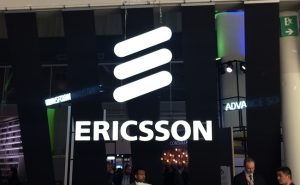Recently, the Ministry of Industry and Information Technology (MIIT) of China revealed more than 150 million terminals were connected to 5G networks, up from 100 million a month ago.
Based on this, GSMA Intelligence have updated the 5G forecasts. Where does it leave us? We now expect that, by the end of the year, 5G connections in China will surpass 200 million (see chart, below, click to enlarge). This means about one-in-eight of the total consumer mobile connections will use 5G networks.
The rapid growth can be explained by four drivers:
- The post pandemic economic recovery. In Q3, quarterly GDP growth turned positive as most business activities are back to normal, including the retail market, which helps device sales. Moreover, a big e-commerce promotion day, the double eleven shopping festival in November, will help drive 5G device sales.
- Increased options of 5G handsets with a wide price range. Vendors have started to shift their focus from 4G to 5G. Search handsets on major Chinese e-commerce platforms such as taobao or JD and the first few pages are dominated by newly released 5G models. Of course, the iPhone 12 5G is heavily marketed on major social media platforms but, beyond high-priced flagships, some 5G smartphone prices have dropped below CNY2,000 ($298). According to the official data from the regulator, 5G models have kept more than 60 per cent of total handset shipments since June.
The story looks similar to the 4G migration in 2015. We are at another junction: the new generation phones are becoming the norm. Following the history, we can expect 4G models would be kicked-out from the new lines in the future. - Attractive 5G data tariffs for data crunchers. 5G is available at a much cheaper per-GB-price than 4G. Far before the handset price dropped, operators started their promotions on 5G data tariffs. Those offers can be purchased without a 5G device, meaning customers can enjoy the price advantage on data, however they will only have 4G speed. This strategy generated a big gap between reported 5G package users from the operators and real connections. Many customers felt the 5G data price was attractive while the handsets were not. Recently, however, it appears many of them have purchased 5G handsets with the vendors’ promotion as mentioned above, which contributed to the jump over the last month.
- Fast network rollout. Without a promising coverage, customers will still not be motivated to buy a new 5G handset. Luckily, Chinese operators have built 60,000 base stations, 20 per cent over their target set at the beginning of the year. The regulator prioritised 5G as a long-term strategic plan at the national level. This helps put pressure on operators to accelerate deployment.
The pay off
Monetisation of 5G consumers remains work in progress. No 5G premium is charged and the per-GB price is cheaper than 4G. Chinese consumers spend lots of time on their mobile phones. They watch TV content, short videos, live streaming and play games with mobile data. And they pay subscription fees to content providers and feed advertising revenue to platforms. But direct revenue from consumers to operators only comes from data package charges. 5G might, hopefully, shift consumers to a higher price band of data packages or take revenue from fixed broadband providers. We need to wait and see if year-end ARPUs do increase with 5G uptake.
Whether or not consumer 5G pays off at a sound pace, the deployment for the consumer segment can open opportunities for B2B 5G sales, including for the public sector. The network rollout usually follows a trace of population density and urbanisation, where those cities have big pressure on infrastructure maintenance, traffic management, and public resources allocation. 5G use cases of smart cities are exactly addressing those issues. Self-driving buses/taxis are also a benefit to public transportation, helping improve transport efficiency and safety. Trials of those use cases are happening in China. Therefore, operators can look for the synergy between B2B and B2C in the deployment cost.
The most important message from the jump of 5G connections is that customers are willing to pay for fast speeds and new use cases. After all, a new phone would be used for more than two years, which is long enough for innovation in consumer applications. While everyone expects B2B to be the most important incremental revenue opportunity in the 5G era, most of the B2B models can’t stand without the consumer segment. Now that 5G has kicked off, it is super important to track and assess future growth and value opportunities for all stakeholders.
– Gu Zhang 张谷 – senior forecaster, Core Data, GSMA Intelligence
The editorial views expressed in this article are solely those of the author and will not necessarily reflect the views of the GSMA, its Members or Associate Members.
Subscribe to our daily newsletter Back
Source of Article



